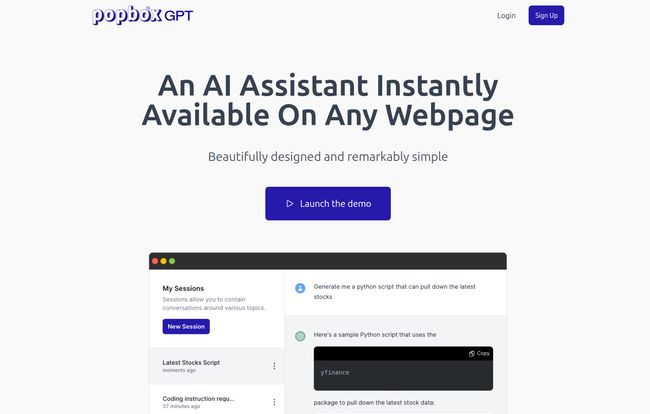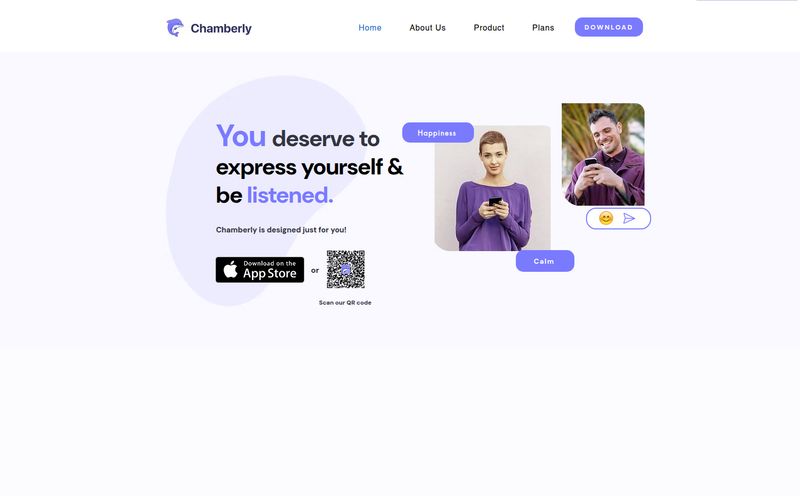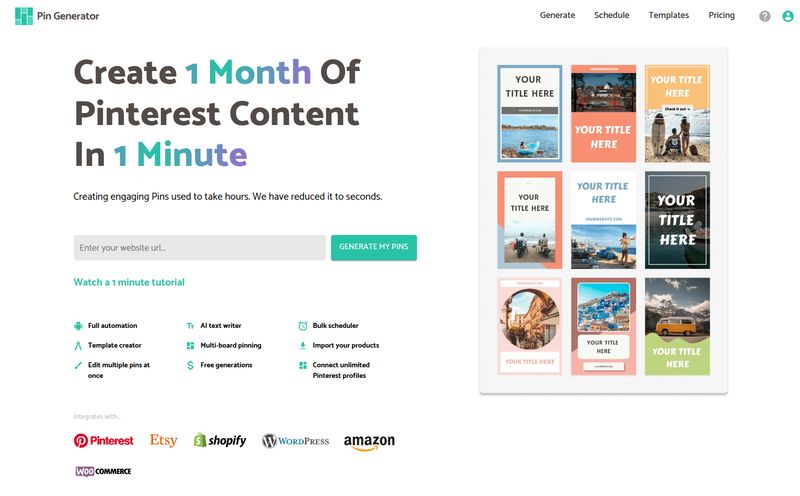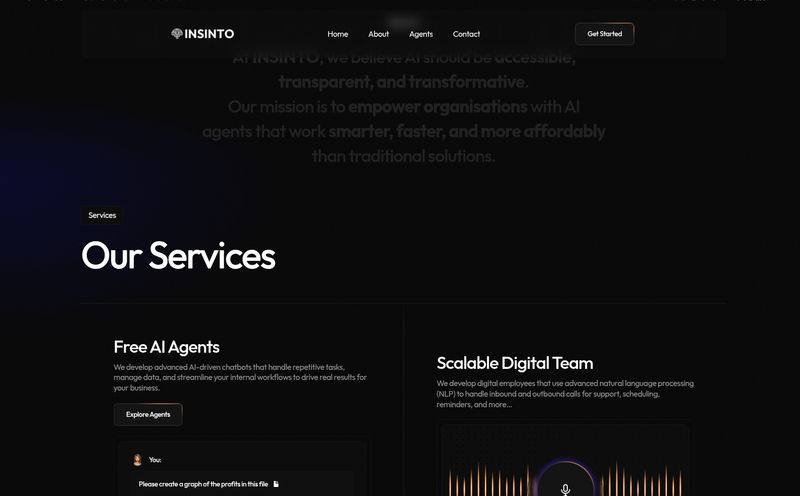How many browser tabs do you have open right now? Go on, count them. If you’re anything like me, a content and SEO guy who practically lives in Chrome, the answer is probably somewhere between “too many” and “a cry for help.” My daily dance involves jumping between Google Docs, Ahrefs, WordPress, a dozen research articles, and, of course, a pinned tab for ChatGPT.
That constant tab-switching… it’s a productivity killer. Every time I flip over to ChatGPT to brainstorm a headline, rewrite a clunky sentence, or ask it to whip up some simple code, I lose my train of thought. It’s a tiny interruption, but those tiny interruptions add up. It’s death by a thousand paper cuts for your focus. So when I stumbled upon PopboxGPT, a Chrome extension promising “An AI Assistant Instantly Available On Any Webpage,” my curiosity was definitely piqued. Another AI tool? Sure. But one that lives inside my workflow instead of next to it? Now you’re talking.
So I took it for a spin. This isn’t going to be a sterile, by-the-numbers breakdown. This is my real, hands-on experience of whether PopboxGPT actually solves the tab-switching nightmare or if it’s just another piece of digital clutter.
So, What Exactly is PopboxGPT?
In the simplest terms, PopboxGPT is a Chrome extension that puts the power of OpenAI's GPT models into a handy, pop-up window you can call up on any website. That’s it. No more new tabs. No more copy-pasting context back and forth. It’s like having a tiny, hyper-intelligent assistant tucked away in your browser, waiting for your signal.
The whole idea is to remove friction. You’re reading an article and don’t understand a term? Summon PopboxGPT and ask for an explanation. You’re writing an email and need a better closing line? Pop it open. You’re staring at a competitor’s landing page and want to generate 10 alternative value propositions? You get the idea. It’s AI assistance, right at the point of need.
My Favorite PopboxGPT Features That Actually Save Time
A tool can have a million features, but it's the few that you actually use daily that matter. For me, PopboxGPT nailed a few key things that have genuinely made my work smoother.
The Magic of Hotkey Access
This is it. This is the main event. With a simple keyboard shortcut (I think the default is Ctrl+Shift+P, but you can probably change it), the AI window appears. It sounds so basic, but the ergonomic efficiency is huge. The movement becomes muscle memory. I’m no longer consciously deciding to “go use AI.” My fingers just do it. It’s the difference between walking across the room to get a book and having it teleport into your hands. This one feature is probably responsible for 80% of the tool’s magic.
Session History That Remembers What You're Doing
Have you ever had a brilliant chat with ChatGPT, closed the tab, and then a day later desperately tried to remember the exact prompt you used? I have. More times than I’d like to admit. PopboxGPT keeps a long-term history of your “sessions.” I was able to start a research thread on Monday about keyword clustering, get sidetracked, and then pick up the exact same conversation on Wednesday without missing a beat. This is a massive improvement over the standard chat interface and great for ongoing projects.
Floating Windows and Full-Screen Freedom
Sometimes you just need a quick answer. The small, free-floating window is perfect for that. It hovers over your page, non-intrusively. But other times, you need to go deep—like when you're drafting a whole blog post outline or debugging a big block of code. That's when you pop it into full-screen mode. This flexibility means the tool adapts to your task, not the other way around, which I really appreciate.

Visit PopboxGPT
Putting PopboxGPT to the Test in a Real SEO Workflow
Talk is cheap, right? So let me give you a concrete example. The other day, I was doing some competitor analysis, deep inside a Semrush report on a rival’s top pages. The page was getting a ton of traffic for a keyword I wanted to target.
Normally, my process would be:1. Open new tab.2. Go to ChatGPT.3. Write a prompt like: “I’m analyzing a competitor’s article titled ‘X’. It ranks for the keyword ‘Y’. Can you suggest 5 blog post angles that are similar but have a unique spin?”4. Copy-paste the answer back into my notes.
With PopboxGPT, I just highlighted the competitor's title on the Semrush page, hit the hotkey, and typed, “Give me 5 unique angles based on this title.” Done. The entire interaction took maybe 20 seconds, and I never left the research page. My focus stayed right where it needed to be. It felt less like a task and more like a thought.
The Elephant in the Room: Let's Talk Pricing
Alright, nothing this convenient is ever truly free. PopboxGPT runs on a subscription model, and the main limiting factor is a monthly word count. Here’s how it breaks down:
| Plan | Price | Word Count | Best For |
|---|---|---|---|
| Starter | $9.99 /mo | 300k words/month | Casual users, students, and light professionals. |
| Standard | $19.99 /mo | 625k words/month | Content creators, marketers, and daily power users. |
| Premium | $39.99 /mo | 1.5M words/month | Heavy-duty writers, agencies, and developers. |
| POP THE BOX | $99.99 /mo | 10M words/month | The 'all-you-can-eat' plan for serious businesses. |
My take? The $9.99 Starter plan is probably the sweet spot for most people. 300,000 words sounds like a lot, and it is. The company states that 1000 tokens is about 750 words, so you're getting a ton of queries for your ten bucks. You’d have to be a seriously heavy user to burn through that. I’ve been on the Standard plan for my test, and I haven't come close to the limit. The value proposition is pretty clear: are you willing to pay $10 a month to save yourself dozens, if not hundreds, of context switches and interruptions? For me, that’s an easy yes.
The Good, The Bad, and The GPT-Reliant
No tool is perfect. Let's get into the nitty-gritty.
What I absolutely love is the sheer convenience. The seamless integration is the star of the show. It just works, and it stays out of your way until you need it. The clean UI and the session history are major quality-of-life improvements over just using a standard ChatGPT tab.
On the other hand, the subscription model will be a dealbreaker for some. If you only use AI occasionally, paying a monthly fee might feel like overkill. And the word limits, while generous, do add a little bit of background anxiety. You’re always aware that the meter is running, which can sometimes stifle pure, unadulterated experimentation.
The other thing to consider is its reliance on OpenAI's models. This is both a pro and a con. You get access to the powerful, cutting-edge tech that drives ChatGPT. But it also means that if OpenAI has a bad day, so does PopboxGPT. Remember that major outage a while back that sent Twitter (or X, whatever) into a meltdown? Your handy extension wouldn't have worked then, either. You’re hitching your wagon to a bigger horse, for better or for worse.
Who is PopboxGPT Actually For?
After using it for a while, I have a pretty good idea of who would get the most out of this.
- Content Creators, SEOs, and Marketers: Oh, absolutely. For brainstorming, drafting, rewriting, generating meta descriptions, or coming up with social media posts on the fly, it's a no-brainer.
- Developers and Programmers: Being able to pull up an AI to explain a piece of code on GitHub or generate a quick script without leaving your window is incredibly powerful.
- Students and Researchers: This is a fantastic tool for summarizing dense academic papers, defining terms, or drafting essays without having to juggle multiple windows.
- The Everyday Power User: Anyone who finds themselves constantly drafting emails, asking questions, or just using AI as a creative partner will feel the benefit immediately.
Honestly, if you use ChatGPT more than a couple of times a day, you'll feel the difference. If you only use it once a week, you can probably stick to your pinned tab.
Here's the bottom line: PopboxGPT isn't reinventing the wheel. It's just putting the wheel in a much more convenient place. It's a refinement tool, a workflow sharpener. It takes an incredibly powerful technology and weaves it directly into the fabric of your browser, removing the little bits of friction that hold you back. Is it a must-have for everyone? Maybe not. But for professionals who value their focus and time, it’s one of the best ten-dollar investments you can make in your own productivity.
Frequently Asked Questions About PopboxGPT
- How are words calculated?
- They use a token-based system, similar to OpenAI. According to their site, every 1000 tokens counts as approximately 750 words. This applies to both your prompts and the AI's responses.
- What happens when I hit my word limit?
- The extension will stop working for the rest of the billing cycle. You'll get a notification, and you’ll have the option to upgrade your plan to a higher tier if you need more words immediately.
- Is my data secure?
- PopboxGPT states that data is processed and stored with security in mind. They have a privacy policy that outlines how data is handled. As with any cloud-based tool, it’s always smart to avoid inputting highly sensitive personal or proprietary information.
- What GPT Model is this using?
- The platform is built on OpenAI's GPT models. They mention using the gpt-3.5-turbo model, which is the same fast and capable model used by many ChatGPT users.
- Can I use PopboxGPT for free?
- No, PopboxGPT is a premium tool and requires a paid subscription for full usage. There doesn't appear to be a free trial or a free tier, so you have to jump into one of the paid plans to use it.
- Is it better than just using the ChatGPT website?
- “Better” is subjective, but it is definitely faster and more integrated. If your main pain point is the constant tab-switching and loss of context, then yes, for that purpose, it’s a much better user experience.
Reference and Sources
- PopboxGPT Official Website
- PopboxGPT Pricing and Registration
- Harvard Business Review on the Cognitive Costs of Context Switching



